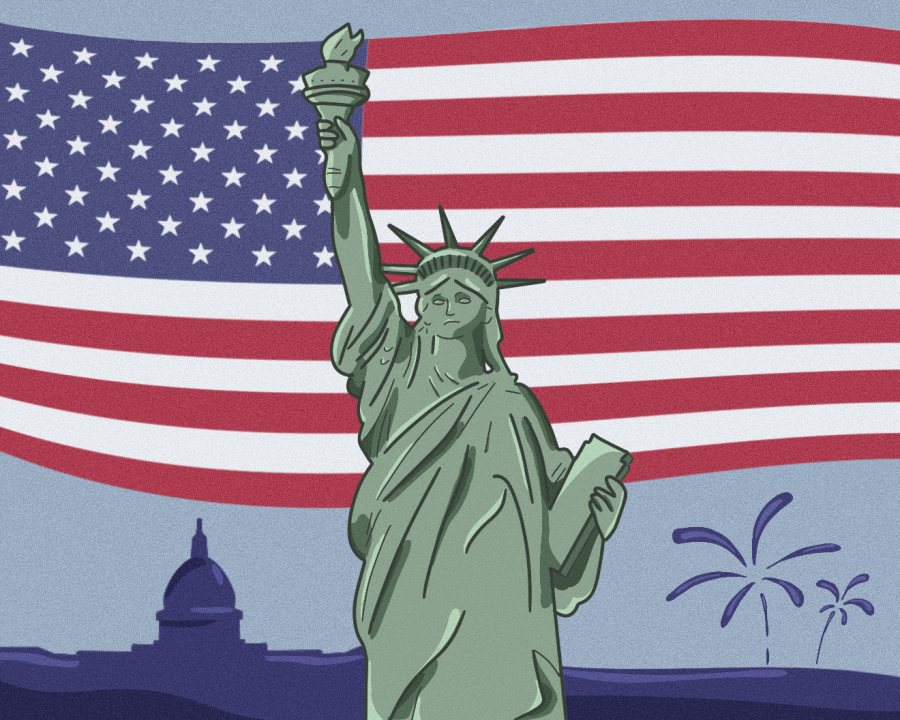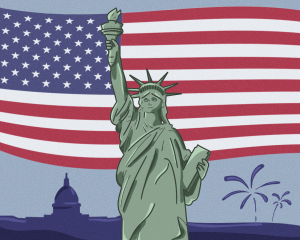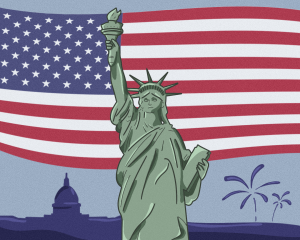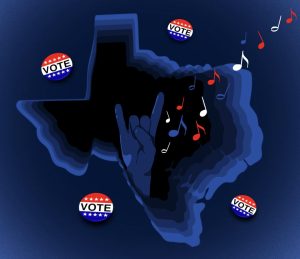The American dream is a lie
February 9, 2023
Editor’s note: This column was submitted by a member of the UT community.
The image I chose for the cover of my 2013 book “Queer Migration Politics” is called “The American Dream is a Lie,” by the artist Favianna Rodriguez. Characteristic of Rodriguez’s style, the image is comprised of abstract figures of orange, blue and green intersecting with one another in chaotic ways: they haphazardly touch, some look straight ahead and others to the side, and some are turned upside down or appear crowded. At the top of the image, a single arm reaches toward an amorphous green figure. In the bottom corner a fetal-looking figure with a solid black eye and lips brushes against a heart-shaped face with a vacant expression.
I chose the image for my book because it reflects that the idea that an individual from any background can pull themselves up by their proverbial bootstraps is a dangerous fiction. Instead, as this image reflects, only diverse people sharing and struggling for space together can lead to the promise of a livable life.
The idea that anyone can achieve whatever they want if they just work hard enough is simply untrue. Scores of studies have shown that upward class mobility is rare in the U.S., and particularly for African Americans and other people of color. For example, a recent study showed that “less than (one) out of every 10 Black working-class-origin people end up in professional/managerial jobs, compared to (one) out of every (five) white working-class-origin people.” These data are not broken down to account for other factors like gender, sexuality or disability, which would certainly supply an even starker sense of the disparities.
Rather than factors such as generational wealth, access to education and health care, the impacts of racism on health and wellness, over-incarceration of Black people, or other factors outside an individual’s control; the myth of the American dream suggests that Black Americans haven’t applied themselves, worked hard enough, or taken initiative. Thus, the American dream turns our attention from the structural factors that influence people’s opportunities and life chances and toward perceived individual failings.
There is no doubt that individual initiative and hard work are important factors in achievement. The problem with the idea of the American dream is that it suggests that working hard is the only ingredient to such success. But if that were in fact the case, then people like my parents should be rich. My parents, both born into working-class families, and both with college degrees, ended up working long, hard hours in low-paying, manual labor jobs that were available in rural Nebraska. When my wealthy friends’ parents were home in the evenings lounging in recliners, my parents were still doing everything they could to keep food on the table. According to the myth of the American dream, my parents needed to work harder. I can’t imagine how.
I am one of the few who moved up from the class I was born into. But my story is the exception. As the image I opened this piece reflects, my success was born of a community of diverse people coming into my life, helping me to learn the things I didn’t know.
If there is ever to be an American dream, it would be that we share everything we have with others in need, and we define success in community terms.
Chávez is chair and the Bobby and Sherri Patton professor in the Department of Mexican American and Latina/o Studies.
















